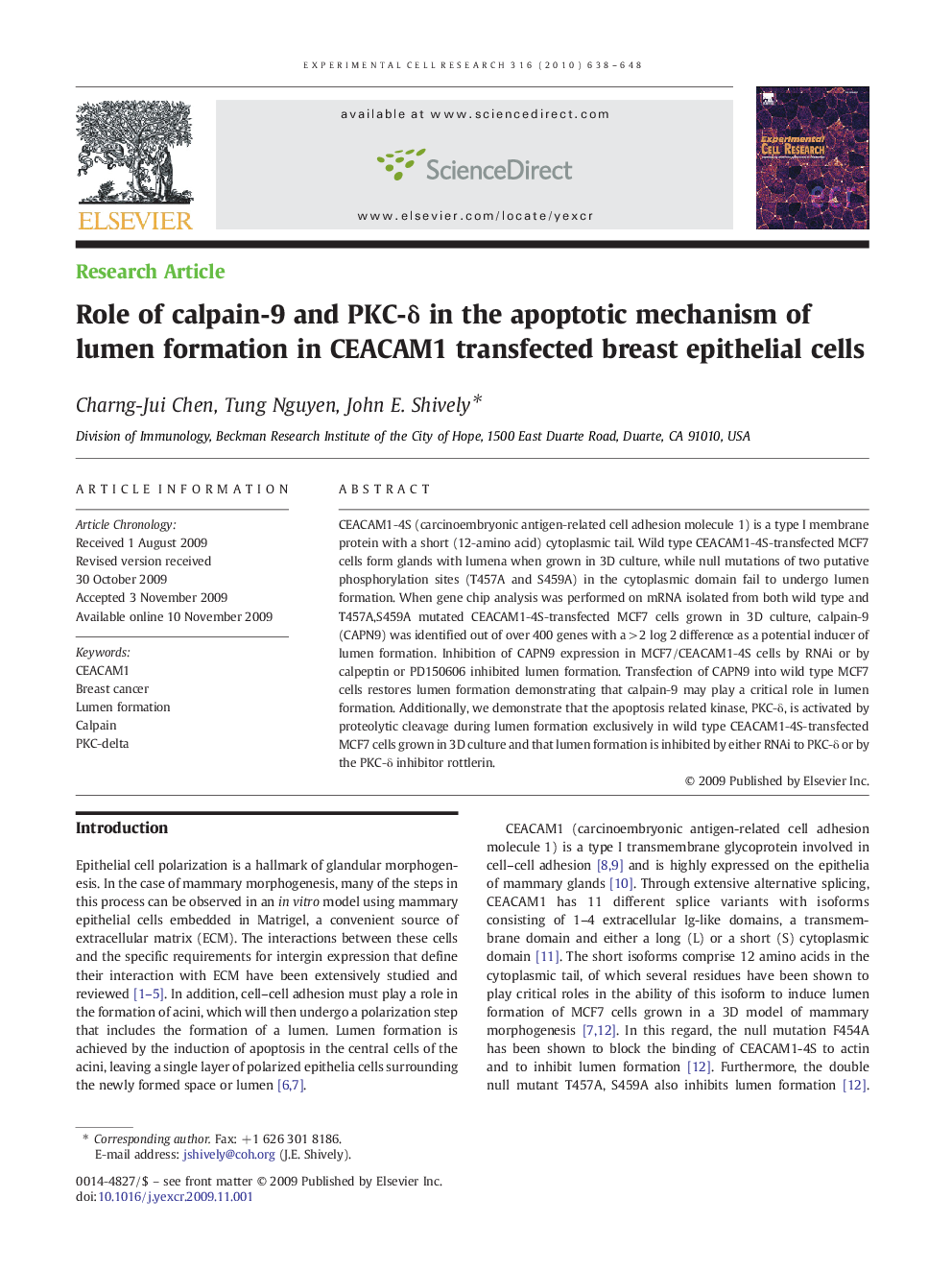| کد مقاله | کد نشریه | سال انتشار | مقاله انگلیسی | نسخه تمام متن |
|---|---|---|---|---|
| 2131400 | 1086638 | 2010 | 11 صفحه PDF | دانلود رایگان |

CEACAM1-4S (carcinoembryonic antigen-related cell adhesion molecule 1) is a type I membrane protein with a short (12-amino acid) cytoplasmic tail. Wild type CEACAM1-4S-transfected MCF7 cells form glands with lumena when grown in 3D culture, while null mutations of two putative phosphorylation sites (T457A and S459A) in the cytoplasmic domain fail to undergo lumen formation. When gene chip analysis was performed on mRNA isolated from both wild type and T457A,S459A mutated CEACAM1-4S-transfected MCF7 cells grown in 3D culture, calpain-9 (CAPN9) was identified out of over 400 genes with a > 2 log 2 difference as a potential inducer of lumen formation. Inhibition of CAPN9 expression in MCF7/CEACAM1-4S cells by RNAi or by calpeptin or PD150606 inhibited lumen formation. Transfection of CAPN9 into wild type MCF7 cells restores lumen formation demonstrating that calpain-9 may play a critical role in lumen formation. Additionally, we demonstrate that the apoptosis related kinase, PKC-δ, is activated by proteolytic cleavage during lumen formation exclusively in wild type CEACAM1-4S-transfected MCF7 cells grown in 3D culture and that lumen formation is inhibited by either RNAi to PKC-δ or by the PKC-δ inhibitor rottlerin.
Journal: Experimental Cell Research - Volume 316, Issue 4, 15 February 2010, Pages 638–648